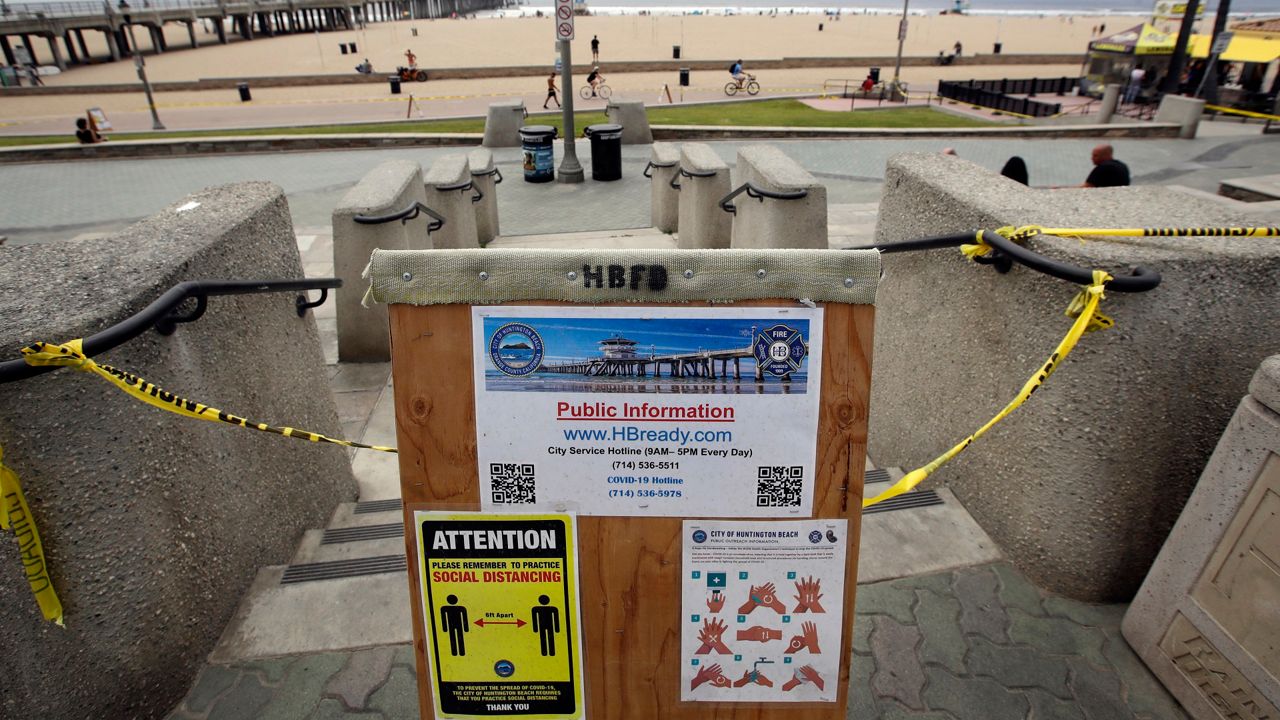SANTA ANA (CNS) — Orange County is likely to get knocked down to the most restrictive purple tier of the state's economic-reopening roadmap, county CEO Frank Kim said today as health officials reported nearly 600 new coronavirus cases.
"It's not a record, but it pretty much puts a bow on it – we'll probably be purple two weeks in a row. That ship has sailed," Kim said of the 598 new diagnoses of coronavirus reported by the Orange County Health Care Agency on Friday afternoon.
Hospitalization numbers are generally rising, as well, but the rate of fatalities has remained relatively low. The county reported two additional COVID-19 fatalities on Friday, bringing the death toll to 1,522. Both people who died were residents of skilled nursing facilities.
From Oct. 25 through Halloween, 39 deaths were reported, up from 35 the week before, but lower than 69 the previous week. Last week, there were 24 fatalities, and so far this week, there have been 16 deaths recorded by the HCA.
About 46% of the county's deaths since the start of the pandemic have been residents of skilled nursing homes or assisted living facilities.
Over the past two weeks, new coronavirus diagnoses have ranged from 183, reported on Nov. 2, to 598. The cumulative case count is now 64,058.
The number of hospitalizations related to the virus decreased from 251 on Thursday to 244, but the number of intensive care unit patients ticked up from 89 to 95, according to the HCA.
Orange County Board of Supervisors Vice Chairman Andrew Do said the county next week will announce a plan to provide coronavirus testing home kits to residents to help stem the tide of COVID-19.
The county has acquired 500,000 test kits that can detect coronavirus from saliva. Plans are to make them available at public libraries and city halls throughout the county, Do said.
"We want it to be mobile and at the neighborhood level, so people can see testing as part of their holiday safe practices," he said. "Before you go see your grandparents, two or three days before you get tested, and after the family get-together, you wait two or three days and get tested again. Then that way you know going in or coming out of a get-together you're safe and the people you are with are safe."
Experts recommend the two- to three-day buffer because it can take that long before the infection is detected from a test.
"We haven't worked through the protocol yet, but by next week we'll have a program that will include locations that are easily accessible to people," Do said.
The rise in cases is "alarming," he said. "It points to a very difficult winter season coming up, and couple that with the holiday season and people need to be very vigilant."
County officials will also soon issue recommendations on best practices for get-togethers over the holidays, which include dining outdoors and keeping the gatherings small in number, Do said.
"Make it a lunch thing where the weather is more tolerable," he said.
Officials say the daily average of new cases would have to come down to about 130 for Orange County to make it to the orange tier, allowing for more businesses to reopen and for some already open to increase their capacity. But the county has to stay under 229 new daily cases to remain in the red tier.
Kim said it is growing more apparent the county will fall back from the red tier to purple. But there will be no changes in terms of capacity allowed in stores and other businesses right away, he said.
"You have to be in it for two weeks" before the restrictions are triggered, Kim said.
If the county remains in the purple tier as of Nov. 24, it would mean the restrictions would be implemented three days later. That means restaurants could still offer indoor dining for Thanksgiving and shopping malls would have the extra capacity for Black Friday shopping.
"The governor has done a good job of putting in that two-week requirement," Kim said. "It gives you a week to have that discussion (with businesses) ... hopefully it doesn't come to fruition, but if it does, there will be no surprises."
Schools won't be closed, but there would be no new school reopenings unless they were able to acquire a variance from the county.
Among the businesses and institutions that would be closed for indoor activity would be churches, museums, zoos, aquariums, gyms, restaurants, and movie theaters.
The change in the three-day average of hospitalized patients went from 18.8% to 17.3%. The county has 30% of its intensive care unit beds and 64% of its ventilators available.
According to HCA data, 1,229,563 COVID-19 tests have been conducted since the start of the pandemic, including 10,935 reported Friday. There have been 56,018 documented recoveries.
The county's positivity rate, which is reported each Tuesday, actually declined from 3.6% to 3.3% this week, and the daily case rate per 100,000 population decreased from 6 to 5.6.
The county's Health Equity Quartile Positivity Rate, which measures a county's response to virus hot spots, decreased from 5.7% to 5.5%. The county has to reach at least 5.2% in that metric to move into the orange tier.
Next week, the county's case rate per 100,000 might jump to about 8, which exceeds the 4 to 7 rate in the red tier, Kim said.
Several other counties are struggling with a rise in cases in schools. But often, the outbreaks are seen in places of work, such as a local car dealer that had a recent outbreak among its mechanics, Kim said.



